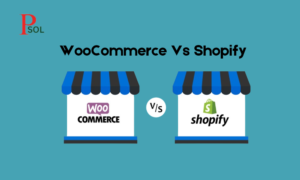E-commerce website SEO strategy is essential for enhancing online visibility and driving organic traffic to your store. Through strategic optimization techniques, such as keyword research, on-page optimization, and content refinement, you can improve your site’s ranking on search engine results pages (SERPs). Optimizing product pages with relevant keywords, structuring URLs effectively, and enhancing user experience are crucial aspects. Additionally, mobile optimization and regular content updates play significant roles in maintaining competitiveness. By monitoring performance metrics and iterating your SEO strategy accordingly, you can steadily increase your e-commerce website’s visibility, attract more qualified leads, and ultimately boost sales and conversions.
What Should Be On-Page SEO for an E-Commerce Website?
Website effective on-page SEO strategy for an e-commerce website is crucial for improving visibility and driving organic traffic. Here’s a comprehensive guide to help you optimize your e-commerce site:
Product Keyword Research:
Identify relevant keywords related to your products, considering search volume and competition.
Utilize tools like Google Keyword Planner, SEMrush, or Ahrefs to discover valuable keywords.
Optimize Product Pages Content:
Include target keywords in product titles, descriptions, and meta tags.
Write unique, compelling product descriptions that incorporate keywords naturally.
Use high-quality images with descriptive filenames and alt attributes containing keywords.
Implement structured data markup (Schema.org) to enhance search engine understanding of your product information.
Pages URL Structure:
Create SEO-friendly URLs that are concise, descriptive, and include target keywords.
Avoid using generic parameters or dynamic URLs; opt for static URLs whenever possible.
SILO Structure Internal Linking:
Link product pages strategically within your website to improve navigation and distribute link equity.
Use descriptive anchor text that includes relevant keywords for internal links.
Optimize Page Loading Speed:
Ensure fast loading times for all pages, especially product pages, by optimizing images, leveraging browser caching, and minimizing HTTP requests.
Use tools like Google PageSpeed Insights to identify and rectify performance issues.
Website Mobile Optimization:
Design your e-commerce site to be mobile-responsive, ensuring a seamless user experience across devices.
Optimize page elements for mobile viewing, such as font sizes, button placements, and menu navigation.
Content Optimization:
Create informative and engaging content such as buying guides, product reviews, and tutorials to attract and retain visitors.
Incorporate relevant keywords naturally within the content while maintaining readability and the user experience.
User Experience (UX) Enhancement:
Improve site navigation by organizing products into logical categories and subcategories.
Implement clear calls-to-action (CTAs) and intuitive site search functionality to help users find products easily.
Optimize for Rich Snippets:
Structure product data to be eligible for rich snippets, such as product price, availability, and reviews.
Utilize markup formats like JSON-LD to provide search engines with structured data.
Regular Content Updates:
Keep product information, descriptions, and prices up to date to maintain relevancy and accuracy.
Refresh content periodically with new keywords and trends to stay competitive in search rankings.
Canonical Tags:
Use canonical tags to prevent duplicate content issues, especially for product variations or similar pages.
Monitor Performance and Iterate:
Regularly monitor website performance using tools like Google Analytics and Google Search Console.
Analyze key metrics such as traffic, bounce rate, and conversion rates to identify areas for improvement and refine your SEO strategy accordingly.
By implementing these on-page SEO strategies, you can enhance the visibility of your e-commerce website in search engine results, attract more qualified traffic, and ultimately drive conversions and sales.
What Should Be Technical SEO for an E-Commerce Website?
A technical SEO strategy for an e-commerce website is paramount to ensuring robust online visibility and driving organic traffic. Beginning with a meticulous site architecture, organizing products into intuitive categories aids both users and search engine crawlers. Implementing XML sitemaps and robots.txt files ensures thorough indexing while controlling crawler access. Prioritizing page speed optimization, mobile responsiveness, and HTTPS security guarantees a seamless user experience across devices and safeguards sensitive transactions. Leveraging structured data markup enriches search engine understanding of product data, enhancing visibility through rich snippets. With a focus on URL structure, internal linking, and error handling, this holistic approach fortifies the website’s foundation, bolstering its search engine rankings and facilitating user engagement and conversions.
Website Architecture:
Ensure a clear and logical site structure, with products organized into categories and subcategories.
Use breadcrumb navigation to aid user understanding and search engine crawling.
XML Sitemap:
Generate and submit an XML sitemap to search engines to facilitate the indexing of all your website’s pages, including product pages.
Robots.txt File:
Configure the robots.txt file to instruct search engine crawlers on which pages to crawl and which to avoid.
Page Speed Optimization:
Optimize page loading speed by compressing images, leveraging browser caching, and minimizing HTTP requests.
Use tools like Google PageSpeed Insights to identify and rectify performance issues.
Mobile-Friendly Design:
Ensure your website is responsive and provides a seamless user experience across devices.
Test for mobile-friendliness using tools like Google’s Mobile-Friendly Test.
Structured Data Markup (Schema.org):
Implement structured data markup to provide search engines with detailed information about your products, such as price, availability, and reviews.
Utilize markup formats like JSON-LD to enhance the search engine’s understanding of your product data.
Canonical Tags:
Use canonical tags to prevent duplicate content issues, particularly for product variations or similar pages.
URL Structure:
Create SEO-friendly URLs that are descriptive, concise, and include target keywords.
Avoid dynamic URLs and parameters where possible, opting for static URLs.
Internal Linking:
Implement internal linking strategies to facilitate navigation and distribute link equity throughout your website.
Use descriptive anchor text containing relevant keywords for internal links.
HTTPS Security:
Ensure your website is secure by using HTTPS encryption, which is not only a ranking factor but also essential for protecting user data during transactions.
404 Error Handling:
Monitor and manage 404 errors to minimize their occurrence and ensure a smooth user experience.
Implement custom 404 pages to help users navigate back to relevant content if they encounter a broken link.
Structured Navigation:
Implement a clear and intuitive navigation menu to help users and search engines easily find and navigate through your website’s pages.
What Should Be Off-Page SEO For E-commerce Websites?
An effective off-page SEO strategy is essential for bolstering the online presence and authority of an e-commerce website. Here’s an optimized paragraph outlining key off-page SEO tactics:
Off-page SEO for e-commerce websites encompasses various strategies aimed at enhancing the site’s reputation and authority across the web. Central to this approach is the cultivation of high-quality backlinks from authoritative and relevant websites. Engaging in outreach efforts, such as guest blogging, influencer collaborations, and partnerships, can facilitate the acquisition of valuable backlinks. Additionally, fostering a strong presence on social media platforms and actively participating in relevant online communities can amplify brand visibility and drive referral traffic. Leveraging online reviews and testimonials not only fosters trust among potential customers but also contributes to search engine ranking signals. By consistently pursuing these off-page SEO initiatives, e-commerce websites can establish credibility, expand their reach, and ultimately drive more organic traffic and conversions.
Link Building:
Actively pursue high-quality backlinks from authoritative and relevant websites within your industry.
Seek opportunities for guest blogging, influencer collaborations, and partnerships to acquire valuable backlinks.
Monitor the quality and relevance of inbound links regularly.
Social Media Engagement:
Establish a strong presence on relevant social media platforms frequented by your target audience.
Share valuable content, product updates, promotions, and engage with followers to foster brand awareness and loyalty.
Encourage social sharing of your products and content to expand your reach and generate referral traffic.
Online Reviews and Testimonials:
Encourage satisfied customers to leave reviews and testimonials on your website and external review platforms.
Respond promptly and professionally to both positive and negative reviews to demonstrate responsiveness and customer care.
Monitor and manage online reputations across review sites and directories.
Influencer Marketing:
Collaborate with influencers in your niche to promote your products and brand to their audience.
Identify influencers whose audience aligns with your target demographic and values.
Content Marketing:
Create compelling and shareable content such as blog posts, infographics, and videos related to your products or industry.
Distribute content through various channels, including social media, email newsletters, and industry forums, to attract links and engagement.
Local SEO:
Optimize your business listings on local directories, Google My Business, and other relevant platforms for improved visibility in local search results.
Encourage local customers to leave reviews and ratings on Google My Business and other local review platforms.
Brand Mentions:
Monitor brand mentions across the web using tools like Google Alerts or Mention.
Engage with mentions positively and build relationships with bloggers, journalists, and influencers who mention your brand.
Community Engagement:
Participate in online communities, forums, and discussion groups relevant to your industry or products.
Provide valuable insights, answer questions, and contribute to discussions to establish yourself as an authority and drive traffic back to your website.
Conclusion:
Implementing a comprehensive SEO strategy is paramount for the success of an e-commerce website in today’s competitive digital landscape. By optimizing both on-page and off-page elements, businesses can significantly enhance their online visibility, attract targeted traffic, and ultimately drive conversions and revenue. From meticulous keyword research and content optimization to technical SEO enhancements and strategic link building, every aspect plays a crucial role in improving search engine rankings and the user experience.




